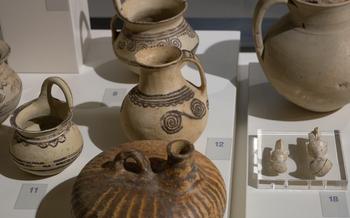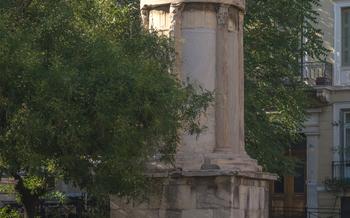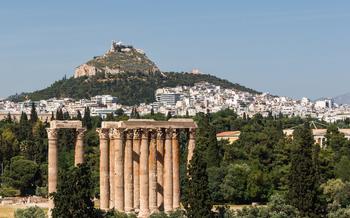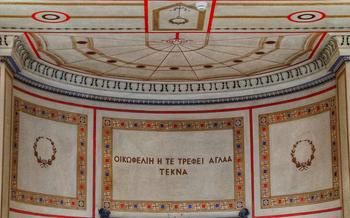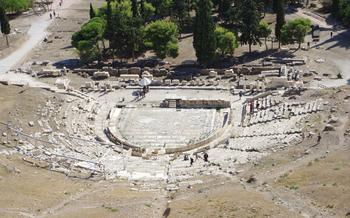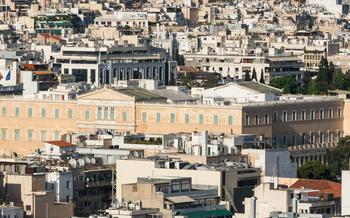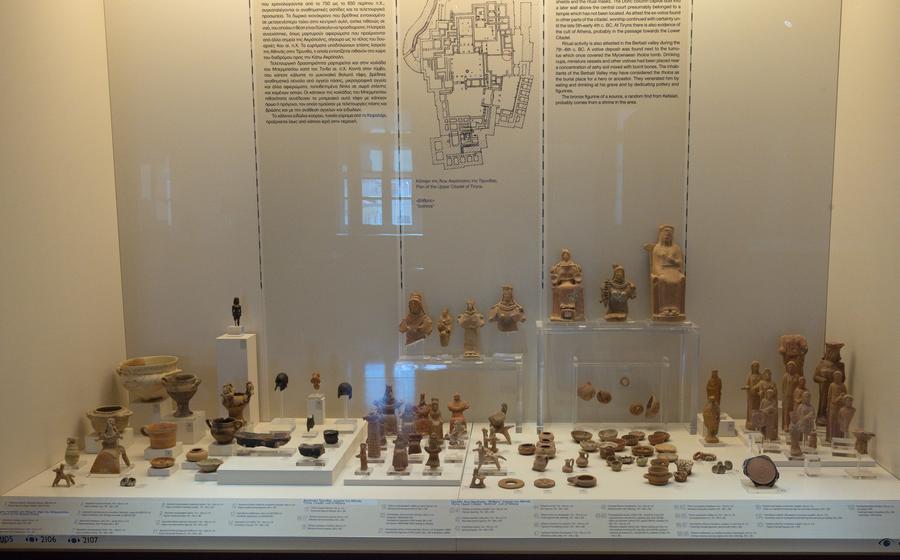
Small Theatre of Ancient Epidaurus
- History of the Small Theatre of Ancient Epidaurus:
- Location and Getting There:
- Architectural Features
- Acoustics and Performances
- Preservation and Restoration
- Surrounding Area
- Epidaurus Archaeological Museum
- Guided Tours and Audio Guides
- Accessibility for Visitors
- Best Time to Visit
- Photography and Videography
- Dress Code and Etiquette
- Food and Drinks
- Insider Tip: Unveiling Hidden Gems
History of the Small Theatre of Ancient Epidaurus:
The origins of the Small Theatre of Ancient Epidaurus can be traced back to the 4th century BC, during the Hellenistic period. It was constructed under the patronage of the wealthy Athenian family, the Lycurgids, who played a significant role in the development of the sanctuary of Asclepius, the ancient Greek god of healing. The theater was designed by the renowned architect Polykleitos the Younger, who also designed the larger theater of Epidaurus, located nearby. The Small Theatre boasts an impressive circular design, a distinctive feature that sets it apart from other ancient Greek theaters. It has a seating capacity of approximately 1,200 spectators, making it a more intimate venue compared to its larger counterpart. The theater's acoustics are considered to be exceptional, allowing for clear and resonant sound transmission, a testament to the advanced engineering skills of the ancient Greeks.
Location and Getting There:
Nestled in the heart of the Peloponnese, the Small Theatre of Ancient Epidaurus is located in the picturesque town of Epidaurus, approximately 130 kilometers southwest of Athens, the capital of Greece. The theater is situated within the sanctuary of Asclepius, a renowned healing center in antiquity.
To reach this historical gem, several transportation options are available. For those driving, the journey takes about two hours from Athens via the scenic coastal road or the modern highway. Ample parking is provided near the theater, ensuring convenient access for visitors arriving by car.
Alternatively, regular bus services connect Athens and Epidaurus, offering a budget-friendly and hassle-free mode of transport. The buses depart from Athens' Kifissos bus station and make several stops along the way. Upon arrival in Epidaurus, visitors can easily walk to the theater, which is just a short distance from the main bus station.
Architectural Features
The Small Theatre of Ancient Epidaurus stands out for its unique circular design, a remarkable architectural achievement that has captivated visitors for centuries. This circular layout creates an intimate and immersive atmosphere, allowing for exceptional acoustics and ensuring that every seat offers an unobstructed view of the stage.
The theater's seating arrangements are equally impressive, with 55 rows of seats divided into two sections. The lower section, known as the Bouleutikon, comprises 21 rows, while the upper section, called the Epikoustikon, features 34 rows. The theater's capacity is estimated to have been around 12,000 spectators, a testament to its grandeur and the importance of theatrical performances in ancient Greek society.
Beyond its seating arrangements, the theater boasts several significant architectural elements. The stage, located at the center of the circular orchestra, is elevated and surrounded by a low wall decorated with intricate carvings. The orchestra, where the chorus performed, features a marble floor and a central altar dedicated to Dionysus, the patron deity of theater.
The theater also incorporates various other architectural features, including a proscenium, a backdrop wall, and a roof. The proscenium, which separates the stage from the orchestra, is adorned with elaborate reliefs depicting scenes from Greek mythology. The backdrop wall, located behind the stage, served as a backdrop for performances and could be changed to suit different plays. The roof, though no longer intact, once provided shade and protection from the elements.
Overall, the architectural features of the Small Theatre of Ancient Epidaurus showcase the ingenuity and artistry of ancient Greek architects. From its circular design to its intricate carvings and impressive seating arrangements, the theater represents a masterpiece of ancient Greek architecture and engineering.
Acoustics and Performances
The Small Theatre of Ancient Epidaurus is renowned for its exceptional acoustics, which have remained intact throughout the centuries. Ancient Greek architects employed ingenious techniques to amplify and optimize the sound, allowing performers to be heard clearly from every seat in the theater. This remarkable acoustic engineering is attributed to the theater's circular design, the placement of the stage, and the use of specific materials.
The theater's circular shape creates a natural echo chamber, reflecting sound waves throughout the space. The stage, positioned at the center, projects sound directly toward the audience, while the surrounding tiers of seats act as reflectors, amplifying and distributing the sound evenly. The use of limestone and marble, with their unique resonant properties, further enhances the acoustics, ensuring that even a whisper can be heard clearly from the back rows.
In ancient times, the theater was used for performances of Greek plays and musical events. The exceptional acoustics allowed actors to project their voices without the need for amplification, creating an immersive and intimate experience for the audience. Today, the theater continues to host cultural performances, including ancient Greek plays, concerts, and theatrical productions, providing visitors with a unique opportunity to experience the magic of ancient acoustics in a truly remarkable setting.
Preservation and Restoration
Over the centuries, the Small Theatre of Ancient Epidaurus has undergone numerous preservation and restoration efforts to maintain its integrity and grandeur. In the 19th century, significant excavations were conducted at the site, revealing the theater's original layout and intricate architectural features. These excavations laid the foundation for subsequent restoration projects aimed at preserving the theater's unique acoustics and overall structure.
One of the key challenges faced in restoring the theater has been the need to balance preservation with modernization. While preserving the theater's historical authenticity is paramount, modern interventions have been necessary to ensure accessibility and safety for visitors. These interventions include the installation of seating cushions for comfort, the construction of ramps and designated seating areas for individuals with disabilities, and the implementation of modern lighting systems to enhance the theater's functionality during evening performances.
Ongoing restoration projects continue to focus on preserving the theater's original materials and techniques. The theater's stone seats, which have weathered over time, are carefully repaired using traditional methods to maintain their integrity and aesthetic appeal. Additionally, efforts are being made to restore the theater's stage building, which was partially destroyed in ancient times. By combining traditional craftsmanship with modern conservation techniques, the Small Theatre of Ancient Epidaurus is being preserved for future generations to appreciate and enjoy.
Surrounding Area
Beyond the captivating allure of the Small Theatre of Ancient Epidaurus, the surrounding area offers a treasure trove of historical and cultural experiences. Immerse yourself in the rich tapestry of the region, where ancient ruins, picturesque villages, and stunning natural landscapes converge.
A short stroll from the theater, the picturesque town of Epidaurus invites you to explore its charming streets, lined with traditional Greek tavernas, cafes, and shops. Delight in the authentic flavors of local cuisine, savor freshly caught seafood, and sip on refreshing beverages while basking in the vibrant atmosphere.
Venture further afield to discover the Sanctuary of Asclepius, a UNESCO World Heritage Site, located just a few kilometers from the theater. This ancient healing center, dedicated to the Greek god of medicine, boasts impressive ruins, including a temple, a hospital, and a stadium. As you wander through the site, imagine the pilgrims who once sought healing and rejuvenation within these sacred grounds.
The surrounding region of the Peloponnese is a haven for nature enthusiasts, with its rugged mountains, lush valleys, and pristine coastline. Embark on scenic hikes, explore hidden coves, or simply relax on one of the many beautiful beaches. The area is also dotted with charming villages, each with its own unique character and traditions, waiting to be discovered.
Whether you're seeking historical wonders, cultural experiences, or natural beauty, the surroundings of the Small Theatre of Ancient Epidaurus offer an abundance of opportunities to create lasting memories and deepen your appreciation for this remarkable region.
Epidaurus Archaeological Museum
The Epidaurus Archaeological Museum, situated a short walk from the Small Theatre of Ancient Epidaurus, is a treasure trove of artifacts and exhibits that provide an intriguing glimpse into the history and daily life of the ancient Greeks. The museum's collection encompasses a fascinating array of artifacts excavated from the theater and the surrounding area. These include intricate sculptures, pottery, tools, coins, and inscriptions that shed light on the vibrant culture and artistry of ancient Epidaurus.
Visitors to the museum can embark on a journey through time as they explore the various exhibits. They can admire the finely crafted statues that once adorned the theater, marvel at the intricate pottery that graced ancient homes, and decipher the secrets held within the inscriptions that provide insights into the political, social, and religious life of this ancient city.
The museum serves as a bridge between the past and the present, bringing to life the rich history and heritage of Epidaurus. It offers a deeper understanding of the significance of the Small Theatre and its role in the cultural and artistic landscape of ancient Greece. A visit to the Epidaurus Archaeological Museum is a must for anyone seeking to delve into the captivating world of ancient Greek history and culture.
Guided Tours and Audio Guides
The Small Theatre of Ancient Epidaurus offers guided tours in various languages, providing visitors with in-depth insights into the theater's history, architecture, and significance. Led by knowledgeable guides, these tours highlight the unique features of the theater, such as its exceptional acoustics and innovative design. Visitors can learn about the ancient Greek plays performed here, the construction techniques used, and the cultural context of the theater's creation.
For those who prefer a self-guided experience, audio guides are available in multiple languages. These guides offer a personalized exploration of the theater, allowing visitors to set their own pace and focus on specific aspects that interest them. The audio guides provide detailed commentary, historical anecdotes, and explanations of the theater's architectural features, creating a rich and immersive experience.
Accessibility for Visitors
The Small Theatre of Ancient Epidaurus is committed to providing an inclusive and accessible experience for all visitors. Wheelchair accessibility is a top priority, with designated seating areas located throughout the theater to ensure optimal viewing angles. Visitors with disabilities are encouraged to contact the theater's staff in advance to arrange for any necessary assistance, such as ramps, elevators, or accessible restrooms. The theater also offers a variety of assistive listening devices and sign language interpretation upon request, ensuring that everyone can fully enjoy the performances and events held at this iconic venue.
Best Time to Visit
The best time to visit the Small Theatre of Ancient Epidaurus is during the spring (April-May) or autumn (September-October) months. The weather is pleasant and warm, with average temperatures ranging from 20 to 25°C (68 to 77°F). This period offers a delightful atmosphere for exploring the theater and the surrounding area without the intense heat and crowds of the summer months.
Avoiding Crowds:
The Small Theatre of Ancient Epidaurus is a popular tourist destination, particularly during the summer months when large groups and tour buses frequent the site. To avoid the crowds and ensure a more intimate experience, plan your visit during the shoulder seasons (spring and autumn). During these periods, you'll have the opportunity to explore the theater at your own pace, capture stunning photographs without distractions, and engage in meaningful conversations with fellow visitors.
Off-Season Charm:
Visiting the theater during the off-season (November-March) offers a unique charm. While the weather may be cooler, the tranquility and solitude of the site create a magical ambiance. You'll have the theater almost to yourself, allowing for a deeper connection with the history and acoustics of this ancient masterpiece. Take advantage of the off-season to embark on a journey through time, immersing yourself in the spirit of ancient Greece without the distractions of crowds.
Photography and Videography
The Small Theatre of Ancient Epidaurus offers ample opportunities for photography and videography. However, it's essential to adhere to the designated guidelines to ensure the preservation of the site and respect for other visitors. Photography and videography are permitted in most areas of the theater, except for the stage and backstage areas. Visitors are encouraged to capture the stunning views, architectural details, and performances from the audience seating. Tripods and monopods are generally allowed, but they should not obstruct walkways or interfere with other visitors' experiences. Flash photography is not permitted, as it can damage the delicate artifacts and frescoes within the theater. For professional photography or videography projects, special permits and permissions may be required. It's always advisable to check with the theater authorities or local tourism offices for specific regulations and restrictions. By following these guidelines, visitors can document their visit while preserving the integrity and atmosphere of this ancient masterpiece.
Dress Code and Etiquette
The Small Theatre of Ancient Epidaurus is a sacred and revered historical site that demands respect and appropriate behavior from its visitors. While there is no strict dress code enforced, it is essential to dress modestly and respectfully, avoiding attire that is overly revealing or inappropriate for a cultural venue. Visitors should prioritize comfort and practicality, opting for footwear suitable for uneven terrain and warm layers for cooler evenings.
When attending performances or events at the theater, it is customary to arrive on time and remain seated throughout the duration of the show. Applause and appreciation are typically expressed at the end of each act or performance. Visitors should refrain from talking, using mobile phones, or engaging in disruptive behavior that may disturb others' enjoyment.
It is also important to be mindful of the theater's historical significance and avoid touching or leaning against the ancient structures. Respecting the site's integrity and preserving its timeless beauty for future generations is of utmost importance.
Food and Drinks
When visiting the Small Theatre of Ancient Epidaurus, you'll find a selection of food and beverage options to keep you refreshed and energized. Near the theater, there are several charming cafes and restaurants that offer a range of local delicacies and international favorites. Indulge in traditional Greek dishes like moussaka, pastitsio, or souvlaki, paired with a glass of refreshing ouzo or local wine. Alternatively, opt for a lighter meal with a selection of fresh salads, sandwiches, or pastries.
If you prefer a more intimate experience, consider packing a picnic lunch to enjoy at the site. Choose from a variety of local specialties, such as fresh fruits, olives, cheeses, and bread, and find a scenic spot to savor your meal while admiring the ancient surroundings. Whether you choose to dine at a local establishment or enjoy a picnic, remember to stay hydrated, especially during the warm summer months.
Insider Tip: Unveiling Hidden Gems
Beyond the main attractions of the Small Theatre of Ancient Epidaurus, there are hidden gems waiting to be discovered. For an off-the-beaten-path experience, venture to the nearby village of Ligourio, nestled amidst picturesque olive groves. Here, you'll find charming tavernas serving traditional Greek cuisine, offering a taste of local flavors.
For a unique perspective of the theater, embark on a scenic hike up Mount Arachnaion. The trail rewards you with breathtaking panoramic views of the theater and the surrounding landscape. Remember to bring your camera to capture this unforgettable moment.
Don't miss the acoustics demonstration typically held before performances. Experience firsthand the remarkable sound quality of the theater as a performer recites lines from ancient Greek plays. This demonstration showcases the theater's exceptional acoustics and offers a glimpse into the theatrical performances of antiquity.
